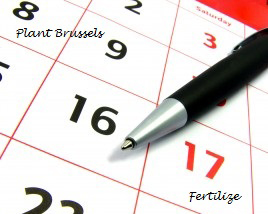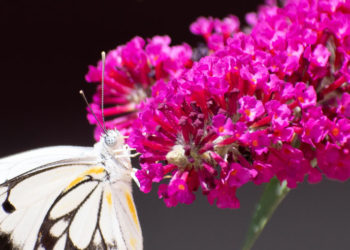Blueberries are among the fruits highest in antioxidant activity. So, they’re gaining in popularity among gardening enthusiasts. If you haven’t tried growing them, or you’ve grown them unsuccessfully, here are some easy tips to ensure your blueberry harvest is bountiful.
Most of a blueberry plant’s roots are in the top 8 inches of soil, so your planting area should be wide, but not very deep. Dig a hole 3’x3′ wide, and about 12″-16″ deep. If you plant on poor draining soil, mound the shrub so it sits 6″-8″ above grade (these shallow roots deal well with wet soil, but remember that in droughts, anything raised dries out faster and will need watering).
To refill the hole, mix peat moss, shredded pine bark (not nuggets, but mulch, and it does need to be pine), and the native soil (unless it is clay, in which case you also have poor drainage, so plan on mounding and using the peat and pine bark 50/50). Blueberries must have acidic soil.
Refill the hole with the above ingredients in a 1:1:1 ratio (1 part peat, 1 part pine mulch, 1 part native soil if not heavy clay). Pine mulch works well for two reasons: it stretches your peat moss, which is more expensive; and it gives a nice texture to the mix, for better air circulation and water channeling. If you can’t find shredded pine mulch, just double up on the peat moss. Canadian peat is the ideal additive.
Make sure to combine at least two blueberry varieties for cross-pollination, as some plants are not fertile by themselves. For two shrubs, you’ll need one 3.8 cu. ft. bale of sphagnum peat moss; and two 3 cu. ft. bags of pine mulch. Once you get all this mixed into the hole, it’s time for amendments. Add 6 cups (2 pounds) of alfalfa pellets and a half cup of soft rock phosphate (optional), or 3 cups (about 1 pound) of a balanced organic fertilizer. Stir it all into the top 8 inches of soil mix.
Pine fines, which are the little bits of chips and dust left over from the process of producing pine nuggets and pine mulch, make a wonderful soil amendment. Pine fines provide amazing results, especially in garden areas with low levels of organic matter. Add about 1 cubic foot to the planting bed for each blueberry plant. DO NOT use hardwood fines with blueberry plants, as the chemical makeup may adversely affect the pH and nutrient absorption.
Set the blueberry plant in the ground so that the top of its root ball is just covered by the mix in the hole. The planting area, after being amended with the peat moss and mulch, will likely have mounded slightly. This is fine, and will encourage rapid growth. Don’t use compost or manure when planting blueberries, as these amendments will raise soil pH above what the plant requires to thrive.
Caring for your blueberry plant:
Pine needles are an ideal mulch for blueberries. Shredded leaves (no walnut), and shredded pine bark mulch are excellent for blueberry plants. DO NOT use hardwood bark mulch, hay or straw, as they alter pH and encourage weeds. During the year you plant it, and the following year, water the bush regularly (one good soaking weekly during the growing season, equal to about 5 gallons of water). You can top-dress (apply fertilizer under the mulch) with alfalfa pellets (2 cups) or granular organic fertilizer (1 cup) in March, and again in late May. Be careful not to over fertilize. Add 1-2 pounds of sulfur per plant each year. Do not fertilize after June in zone 3-5, or after July in zones 6-8.
Blueberry plants do not like cultivation (due to their shallow roots), so keeping them weed-free with a thick, porous mulch is essential for blueberry plants to thrive. Birds love blueberries, so use bird netting if you intend to have any berries for yourself!





No Comments